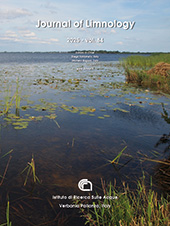Biogeochemical drivers of methane dynamics in the water column of Georgian Bay’s embayment, Lake Huron
All claims expressed in this article are solely those of the authors and do not necessarily represent those of their affiliated organizations, or those of the publisher, the editors and the reviewers. Any product that may be evaluated in this article or claim that may be made by its manufacturer is not guaranteed or endorsed by the publisher.
Authors
Methane (CH4) production in oxygenated freshwater systems remains an active area of research in biogeochemistry. This study investigates CH4 dynamics in Honey Harbour’s North Bay, a stratified freshwater oligotrophic embayment of Georgian Bay (Lake Huron), by integrating microbial community analyses, and geochemical measurements. The field study was conducted in 2021, with four sampling campaigns carried out during the months of July, August, September, and October. During stable stratification, CH4 is present in oxic surface water with a maximum of 4.69 μg/L in September. The abundance of Synechococcus in surface waters indicates that CH4 formation may be driven by methylphosphonate (MPn) degradation under phosphorus limitation conditions. Additionally, methanogenic archaea were detected in oxic waters, indicating possible methanogenesis in oxic surface freshwaters. The CH4 oxidation possibly was supported by Fe- and Mn-reducing bacteria such as Geothrix and Methylobacter, which increased at depths below chemocline. Redundancy analysis (RDA) demonstrated strong positive correlations between CH4, photosynthetically active radiation (PAR), and microbes linked to CH4 cycling. Our study shows that CH4 production in surface waters is influenced by phototrophic and archaeal activity, whereas deeper waters exhibit CH4 oxidation coupled to metal cycling and Fe- and Mn-reducing bacteria. This study provides novel insights into microbial and geochemical interactions regulating CH4 emissions in oligotrophic freshwaters of Georgian Bay embayment.
Ethics Approval
Cristiana Callieri, CNR-IRSA Water Research Institute, Verbania-Pallanza, ItalySupporting Agencies
NSERC (Natural Sciences and Engineering Research Council of Canada) Discovery GrantHow to Cite

This work is licensed under a Creative Commons Attribution-NonCommercial 4.0 International License.






